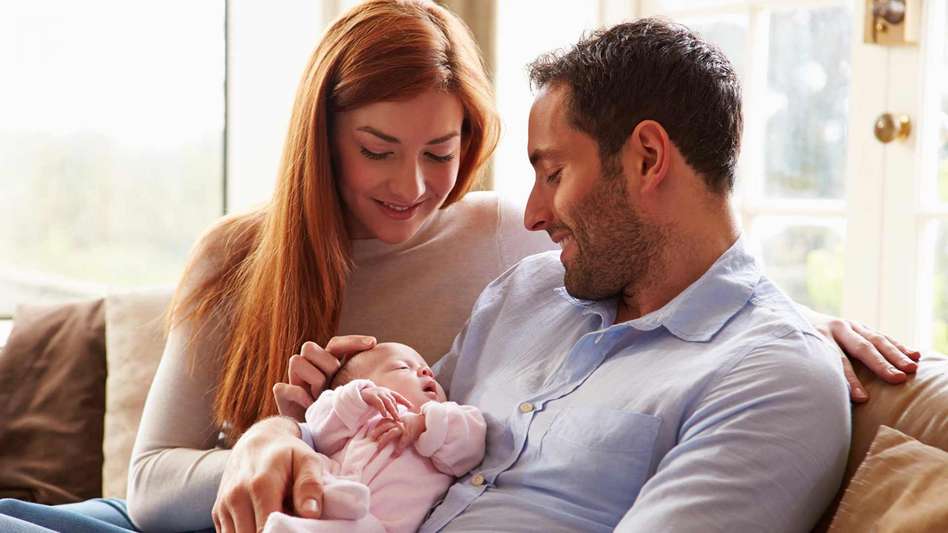Forceps delivery complications and possible negligence claims

Forceps are sometimes used to deliver a baby, usually if the mother becomes exhausted, the baby is distressed or is in an awkward position. Forceps are meant to expedite delivery, with minimal risk of trauma to mother and baby.
Tees Law provides expert legal advice for medical negligence claims. Please note: we can only work with people where the birth took place in England or Wales, UK.
- Problems after forceps delivery
- Forceps delivery medical negligence claims
- Risks of forceps delivery
- Risk of serious birth injury due to forceps delivery
- When and why are forceps used?
- Different types of forceps and how they work
- Consent to use of forceps
- Can I refuse to give consent for the use of forceps?
Problems after forceps delivery
Forceps should only be used when medically necessary, and with the mother’s consent. Unfortunately, some forceps deliveries can cause serious and devastating injuries to mothers and their babies. It can be especially traumatic for mothers who did not plan a forceps delivery (even if no physical harm was caused to mother or baby).
Forceps delivery medical negligence claims
If you experienced a problem during or after a forceps delivery, you could have a claim for negligence if there was:
- any significant injury to the baby
- any physical or psychological injury to the mother
- lack of adequate consent for the procedure
Risks of forceps delivery
Forceps deliveries can cause superficial, temporary birth injuries to the baby. The NHS states that risks of forceps deliveries include:
- temporary marks on baby’s face
- small cuts or bruises on baby’s face
- a bruise on baby’s head (known as ‘cephalohaematoma’) which may increase the baby’s risk of developing jaundice.
The NHS advises that small injuries generally heal a few days after birth. In normal circumstances forceps shouldn’t have a long-term effects on the baby.
However, forceps deliveries can be distressing for parents and babies. It’s very natural for parents to be concerned if the baby has suffered scratches or bruises during delivery. The mother should be warned about the likely injuries from forceps before the baby is delivered or, if it’s an emergency delivery, shortly after.
Call for a FREE initial consultation on 0800 013 1165
Risk of serious birth injury due to forceps delivery
Serious birth injuries due to forceps deliveries are very rare. However, forceps can lead to long-term or permanent health issues for the mother and baby. The risk of complications during a forceps delivery may increase if the baby is very large, in a difficult position, the head is positioned relatively high up in the birth canal or the doctor has had no training or has no experience in their use.
Possible injuries as a result of a forceps delivery include:
- bleeding (haemorrhage) inside baby’s skull, and/or skull fractures
- damage to the baby’s facial nerves
- swelling on baby’s head
- trauma to the baby’s eyes
- brain injury to the baby, such as cerebral palsy
- physical injury to the mother (usually 3rd or 4th degree tears).
The risk of a serious birth injury during a forceps delivery is incredibly low, but it can happen. In very rare cases, the baby may suffer a permanent birth injury or die shortly after birth as a result of their injuries.
When and why are forceps used?
Forceps are a form of assisted delivery. Assisted deliveries are quite common in the UK (about 1 in every 8 births) and they’re most common when labour is particularly long, the baby is distressed and spontaneous delivery is likely to be slower.
Doctors might recommend a forceps delivery if:
- the baby is showing signs of distress, such as a decreased or increased heart rate
- the baby is in a difficult position to be delivered by the mother’s effort alone
- the mother needs help delivering the baby, for example if she has been in labour a long time and has become too exhausted.
Doctors may recommend forceps if the baby needs to be born quickly – for example, if there is an immediate risk to the mother or baby’s life.
The use of forceps depends entirely on the individual case, and the wishes of the mother. Doctors may recommend forceps if the mother has planned a vaginal birth and needs assistance during the second stage of labour. The second stage of labour begins when the mother’s cervix is fully dilated. By the second stage of labour, the baby is normally at or below the mid-cavity of the mother’s pelvis. If the baby is sufficiently low down in the birth canal, forceps delivery may be less risky than an emergency caesarean section.
If the baby is very low down in the birth canal, an emergency caesarean section may not be the best mode of delivery as the baby would need to be pushed back up the birth canal in order to be delivered by caesarean section. Therefore, in some situations, forceps may be the safest mode of delivery. There is some risk to the mother/baby, but as all options carry some risk, the doctor will recommend the safest mode of delivery taking all the circumstances into account. Further, if the baby has progressed far down the birth canal enough for forceps to be a safe option, then they should advise you accordingly and seek your consent.
Doctors may recommend forceps to help minimise the risk of injury and help your baby to be born safely, in the right conditions. Forceps can help mothers who wish to have a vaginal birth avoid a caesarean section. Forceps are typically recommended if a caesarean section is considered too risky or if the baby will be delivered quicker than by caesarean section.
Different types of forceps and how they work
There are many different types of forceps, each designed for use in specific situations. Common types of forceps you might hear about include:
Outlet forceps (e.g. Wrigley’s forceps)
Wrigley’s forceps are smaller and gentler than other types of forceps. They are designed for use when the baby is very far down the birth canal, and is almost born. They’re typically used when baby’s head is already showing. You might also hear them referred to as ‘lift-out’ forceps.
Low/mid-cavity forceps (e.g. Neville Barnes forceps)
Mid-cavity forceps are slightly bigger than outlet forceps and are normally used when the baby is positioned a bit further up the birth canal.
Rotational forceps (e.g. Kielland’s forceps)
Kielland’s forceps are used where the baby’s head needs to be rotated into a position suitable for a safe vaginal delivery before delivery takes place. In the wrong hands, Kielland’s forceps are potentially dangerous medical instruments and can cause serious trauma to the mother and baby.
The Royal College of Obstetricians and Gynaecologists (RCOG) recommends that Kielland’s forceps be only used in theatre, with tested and effective local anaesthetic. They should only be used by doctors trained and experienced in their use. When used correctly, Kielland’s forceps can help to achieve a successful vaginal birth.
Consent to use of forceps
In some situations, a forceps delivery may be the safest option for mother and baby. Advice from the RCOG suggests that a caesarean section may not always be an alternative to an assisted delivery because of the risks involved. Second stage caesareans are very difficult procedures, which can lead to complications for mother and baby. They may also have an effect on future pregnancies. A caesarean section may not always be a viable alternative to a forceps delivery, and your caregivers should tell you about all the options available so that you can make an informed choice.
Doctors and midwives must obtain consent to a forceps delivery. The consent should be:
- voluntary: the decision to consent to treatment should be entirely the patient’s own. So, you shouldn’t be pressured into a certain type of treatment by friends, family or medical staff.
- informed: caregivers should tell you about the treatment and answer your questions. They should tell you about the risks, benefits and alternative treatments available. In the case of forceps, your doctor should also tell you about other procedures such as ventouse (vacuum extraction) and caesarean and the benefits and risks to you and your baby.
- given with capacity: in order to consent to treatment, you must be able to understand the information your caregivers present you with. If a patient lacks capacity, caregivers are allowed to treat you without your consent if it’s in your best interests to do so.
Can I refuse to give consent for the use of forceps?
You have a choice about whether forceps are used to deliver your baby or not. Mothers may refuse to consent to any procedure they don’t want during their labour and delivery.
Before your doctor attempts a forceps delivery, they must fully explain the procedure to be carried out, its likely complications and the alternatives available. The doctor must also explain what will happen if the forceps delivery is unsuccessful (for example, an emergency caesarean section). The doctor must answer all your questions and address any concerns you may raise. However, it must be borne in mind that forceps deliveries usually take place as an emergency, in situations where you may be quite distressed and the doctor may need to deliver your baby quickly if the baby is in distress. Your birth partner may ask questions on your behalf.
If you wish to avoid a delivery by forceps, make sure your wishes are included on your birth plan and discuss it with the attending midwife beforehand. If you are worried, ask your doctor or midwife once you are in labour.
Consent forms aren’t normally signed for forceps deliveries. You will be asked to provide verbal consent to the procedure. However, if the doctor or midwife thinks a caesarean section may be necessary if the forceps delivery fails, you should be asked to sign a consent form.
If you had a forceps delivery, and think it might have caused a negligent injury to you or your baby, talk to our birth injury claims specialists. Please note, Tees Law is based in England, UK and we are only able to work with clients where the birth took place in England or Wales, UK.
Disclaimer
All content is provided for general information only, and should not be treated as a substitute for the medical advice of your own doctor, any other health care professional or for the legal advice of your own lawyer. Tees is not responsible or liable for any diagnosis made by a user based on the content of this site. Tees is not liable for the contents of any external internet sites listed, nor does it endorse any service mentioned or advised on any of the sites. Always consult your own GP if you're in any way concerned about your health and your lawyer for legal advice.
Tees is here to help
We have many specialist lawyers who are based in:
Cambridgeshire: Cambridge
Essex: Brentwood, Chelmsford, and Saffron Walden
Hertfordshire: Bishop's Stortford and Royston
But we can help you wherever you are in England and Wales.
Chat to the Author, Katheryn Riggs
Associate, Medical Negligence, Bishop's Stortford office
Meet Katheryn
- Areas of expertise
- Accreditations
- Testimonials
A - Bishop's Stortford
'We went to Tees for help with a medical negligence case, they provided amazing support, understanding and care. Katheryn explained the process of our case, she’s been absolutely amazing, not only in an exceptionally professional way but in a personal and empathetic way as well. The result found us very satisfied'
Miss Lauren Addicott
Hove
I came to Tees with no knowledge of how a medical negligence claim would work or the machinations of the compensation system. My assigned paralegal, Katheryn Rigg, was consistently helpful, clear, available and empathetic. I am very pleased with not only the end result, but with how swiftly the process was completed.
Mr and Mrs Robin Lincoln
Bishop's Stortford
Tim Deeming took me through the settlement process step by step and was a master tactician in the final negotiation, who I was proud to have represent me. Katheryn Riggs gave me all the support to file the claim. Tees draw on their vast experience to bring the very best medical experts to the table.



